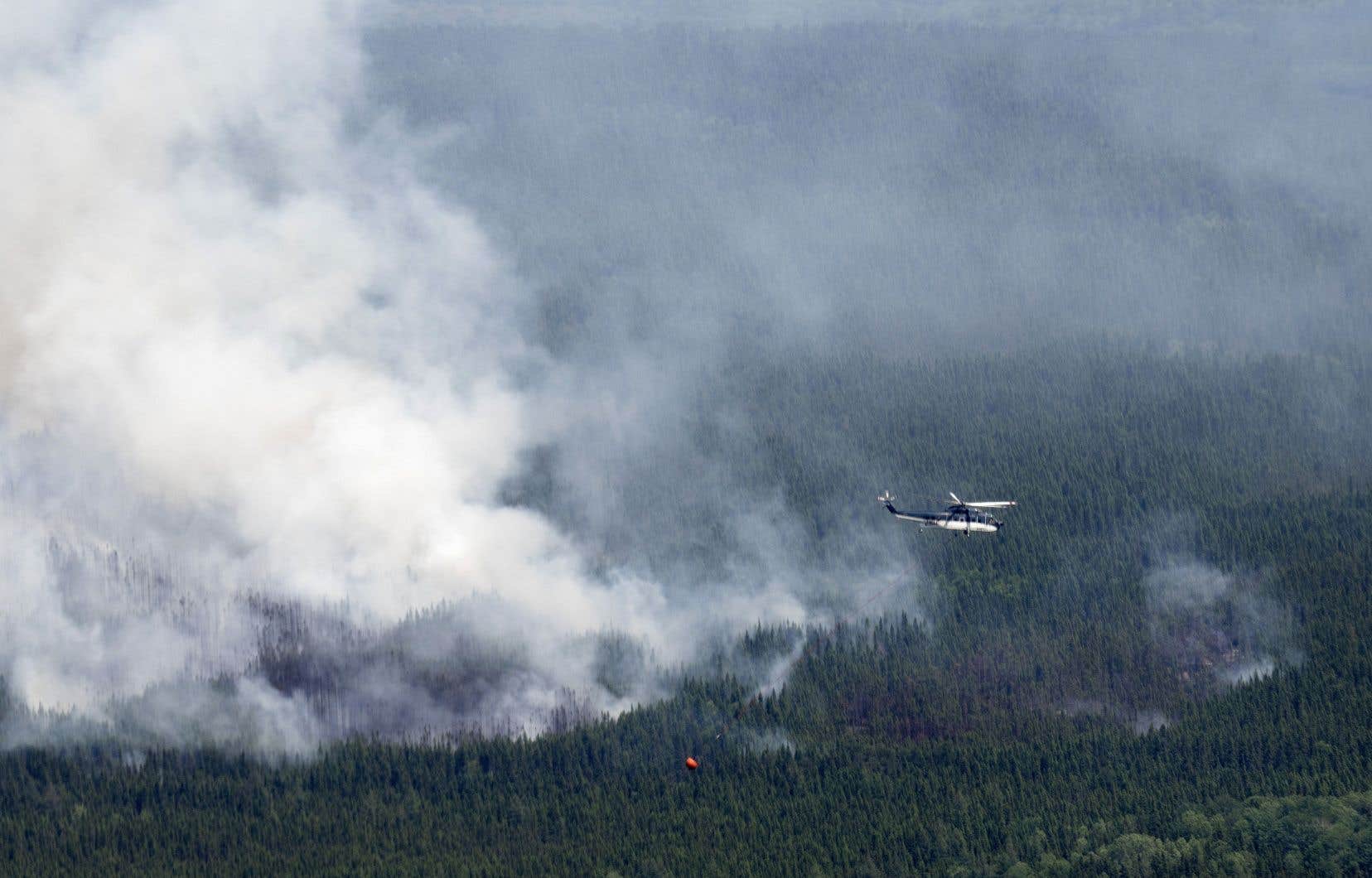The megafires continue to grow: more than 10 million hectares have already burned this year, a total far greater than anything Canada has ever known and exceeding the most pessimistic projections of scientists.
These figures are expected to worsen further since 906 fires were active on Saturday in the country, including 570 considered uncontrolled, according to national figures from the Canadian Interagency Forest Fire Center. And the authorities are forced to let the majority burn, the scale of the fires, their multitude and the difficulty of access exceeding the capacities of the Canadian and international firefighters, present in number.
“We find ourselves this year with figures that are worse than our most pessimistic scenarios, explains to Agence France-Presse (AFP) Yan Boulanger, researcher for the Canadian Ministry of Natural Resources. What is completely crazy is that there has been no respite since the beginning of May. Everything is in place for the situation to worsen, ”sums up this forest fire specialist. For him, “the year 2023 will inevitably mark the spirits”.
In total, the forests burned in just six and a half months represent an area close to that of Portugal or equivalent to that of Iceland. Since January, the country has counted 4,088 fires, including many blazes reaching hundreds of thousands of hectares. On Thursday, a 19-year-old firefighter lost her life battling blazes in the West. More than 150,000 people had to be displaced.
It is mainly the boreal forest that goes up in smoke, far from inhabited areas. But with serious consequences for the environment. This ring of greenery that encircles the Arctic – in Canada therefore, but also in Alaska, Siberia and northern Europe – is indeed vital for the future of the planet.
Another particularity of this northern forest: it releases 10 to 20 times more carbon per unit of area burned than other ecosystems. By releasing greenhouse gases into the atmosphere, these fires in turn contribute to global warming, a vicious circle.
“Taste” of the future
“We are on immense dimensions, the fire we are managing is 65 kilometers long, this poses enormous organizational challenges”, tells AFP Colonel Philippe Sansa, at the head of a detachment of 120 French firefighters. deployed in northern Quebec.
Infrared cameras and drones are used to analyze hot spots, he explains, describing very complex logistics.
“You are sometimes forced to pull a lance for several kilometers to deliver water,” adds the firefighter. “For a fire of 110,000 hectares, we have 80 firefighters and 6 helicopters, which is much less than what we can deploy in France on a fire 100 times smaller. »
Unaccustomed to megafires, unlike the west of the country, Quebec has so far been the most seriously affected province with 4.4 million hectares burned. Like the rest of the country, the north is experiencing severe drought, with much below average rainfall for months and high temperatures.
“We need international aid because the resources we have in Quebec are not sufficient,” says Stéphane Caron, spokesperson for the Society for the Protection of Forests against Fire in the province.
In the west of the country, British Columbia has also appealed for international assistance. “We expect the weather to remain hot and dry in the coming months. So we don’t expect any respite from a meteorological point of view,” explains Sarah Budd, of the fire department of this province on the Pacific coast.
Since the beginning of July, the situation has taken a dramatic turn in this region with more than 250 fires starting in three days last week, mainly triggered by lightning. “It’s a taste of what the future may hold for us,” fears Stéphane Caron, since climate change is increasing the frequency and intensity of fires in boreal forests according to experts.
The season started in Alberta, which had to declare a state of emergency in May due to an unprecedented situation. A few weeks later, Nova Scotia, an Atlantic province with a very mild climate, and especially Quebec were in turn caught in megafires.
In the boreal forest, because of the depth of humus on the ground, fires can continue to burn for months.
